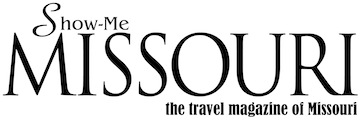Churchill, Church & Charm
February 2017

No doubt about it, Beks knows how to serve up sumptuous fare inside the warm ambiance of this charming restaurant in the historic Brick District of Fulton. So Erifnus beat a path to the Brick District and let me graze. I’d had the sliders before, so today the black and blue tilapia jumped off the menu, blackened with bleu cheese crumbles.
Across the old brick street from Beks, the tailor to your brain beckons. Well Read Books, an independent bookstore, fills its 120-year-old space with book smells and good light, easychairs and cats.
Fulton tells a good story. It’s the setting for a pair of dramatic portrayals by the world’s two top conservative icons. Ronald Reagan calls King’s Row his best movie. Filmed in 1942, it’s a fictional story about folks in Fulton. Four years later, Winston Churchill delivered his Iron Curtain Speech on the campus of Fulton’s Westminster College and set in motion the American visual of the Cold War, which consumed the attention of an octet of presidents, including Reagan.
The Winston Churchill National Museum sits in the Church of St. Mary the Virgin, Aldermanbury. The old church gets around. It was built nearly 900 years ago in the middle of London. Sir Christopher Wren redesigned the chapel after the 1666 Great Fire of London gutted its interior. The blitzkriegs of 1941 destroyed the old church, again. But it survived enough that in the mother of all pilgrimages, loving hands picked up the church, jumped the pond and plopped it down in Fulton. They disassembled and reassembled it using a numbering system that’s part paint-by-number, part Rubik’s Cube. Having undergone a facelift worthy of Wren, the church houses a museum celebrating Churchill’s life and achievements. Outside sits just enough of the Berlin Wall to give you a creepy feel for the reality of the Cold War standoff.
In a way, this place has become the American Westminster Abbey—without all the dead bodies. But it’s real, and presented tastefully. Before the old church made its big leap, before the tragic fire and the awful bombs, it was the place where William Shakespeare prayed for good reviews and where John Milton got married. I think Milton talks about his marriage in his autobiography, Paradise Lost. Maybe not. During an earlier visit to Fulton, I searched in vain throughout the college for a Paradise Lost and Found. The Kingdom holds no such treasure.
The town also treasures its most famous resident that nobody talks about. Henry Bellamann was born and raised in Fulton, and when he moved away to teach music at Julliard and Vassar, he dabbled in psychology and poetry. But his lasting legacy is a dark description of psychological terror and taboo, the seed for the modern soap opera. It’s the novel, King’s Row–the same book that later boosted Ronald Reagan’s career—about a small town with whitewashed fences and whitewashed reputations hiding dirty little corners and the seamy underbelly of its residents’ obsessions with money and status, class and racism, sex and sadomasochism, profit and plunder, and a cornucopia of mental afflictions.
The novel begins by advising readers that the story is fictional and could be about any town anywhere. To be fair, that statement is true. But there’s little doubt that Bellamann’s setting is Fulton. In the acutely sanitized movie adaptation of the book, Ronald Reagan received accolades for his performance. But the movie bears little resemblance to the novel’s deep disturbing Dostoyevsky-like themes and subplots. Literary critics call this book the blueprint for Peyton Place—and every soap opera since.
The above is an excerpt from John Robinson’s third book, Pioneers Need Pants, to be published in 2017. Read more of the author’s stories at JohnDrakeRobinson.com. His previous books, Coastal Missouri and A Road Trip Into America’s Hidden Heart are available at independent bookstores and online booksellers everywhere.
